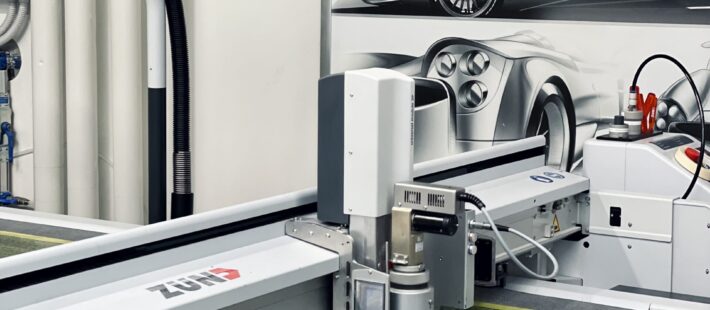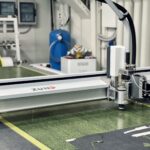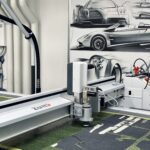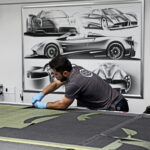Zonda and Huayra represent the pinnacle of perfection and are named after the wind god of South American mythology, a wind that blows on the eastern slope of the Andes in central Argentina. We are talking about the exclusive hypercars made by the Italian car manufacturer Pagani in a limited edition. In 2023 the production of the Pagani Utopia, the third chapter in the history of this brand, comes to life. More than four thousand stylistic drawings, ten scale models, a wind tunnel model, two 1:1 scale models and countless ideas, research and experiments on eight complete prototypes for a team work that lasted more than six years. Passion, effort and sacrifice, with the aim of creating something timeless and at the cutting edge of technology.
ON THE CUTTING EDGE BETWEEN ARTISANAL AND INDUSTRIAL
In San Cesario sul Panaro near Modena, Italy’s automative nerve center and home of Ferrari, Lamborghini and Maserati, Horacio Pagani and his team have spent the past 25 years perfecting their designs. Having worked for Lamborghini, the visionary young engineer quickly became an expert in the making of carbon fiber parts. In 1992 he established Modena Design and the idea for the Zonda took shape. In 1998, Pagani Automobili was founded. For the cutting of carbon fibre fabrics, the San Cesario Atelier relies on Zünd’s innovative Swiss cutting technology. In 2018, the company installed the second Zünd G3 L-2500 cutting system, which replaced the old Zünd PN L-1200 that had more than 20 years of honourable career behind it.
At the end of 2015, Pagani moved into an ultra-modern manufacturing facility, a stone’s throw away from their previous location. The primary goal was to gain more space and optimize individual production steps. Efficiency, cost savings, and sound investment are palpable throughout the company.
The majority of parts that go into a Pagani are painstakingly crafted by hand, cutting with the new Zünd G3 cutter is one of the few phases of production that have undergone complete automation.
RELIABLE TOOLS FOR CHALLENGING MATERIALS
Each Pagani chassis is constructed from precisely 240 carbon-based composite components. The exact combination of carbon fiber that goes into each part is a closely guarded company secret. Depending on the required stiffness and strength, close to 10 different composites are used.
One of these combines titanium and carbon fiber in a composite called Carbotanium, developped and patented by Pagani. It is roughly six times lighter than steel and provides the best strength-to-weight ratio in the automotive industry. Cutting titanium-reinforced carbon fiber is extremely challenging.
The Zünd Electric Oscillating Tool – EOT is the perfect tool for this application. The EOT is extremely versatile, and it can be used for cutting all types of carbon fiber materials quickly and efficiently. Pagani also has a need for processing honeycomb materials. These are cut on the same Zünd G3 machine using the Pneumatic Oscillating Tool – POT, an air-driven tool with extended, 8 mm stroke that provides the force needed to reliably and productively process this type of material.
Pagani’s G3 is also equipped with a 1kW Router Module – RM–A with eight-station Automatic Router Bit Changer – ARC, tangible proof of the versatility of Zünd cutting machines. The router module is used for machining polymerised composite materials.
MATERIAL SAVINGS OF MORE THAN 20%
Pagani carbon fiber components are strictly made to order. The state-of-theart Zünd nesting function ensures that all parts are optimally laid out on the material. The software automatically calculates the best placement of even the most complex cut contours and nests them together as tightly as possible. This automated process significantly reduces the time required for job preparation and setup and maximizes material yield while minimizing cut waste.
“Besides the tremendous labor savings, the automated nesting function has also helped us achieve an impressive 20% or more in material savings”, explains Roberto Malmusi, R&D Composite Layup Supervisor.“The layout of the G3 user interface Zünd Cut Center – ZCC is very intuitive and makes the system extremely easy to use. Consequently, the time it took for our operator to learn the new system was very short. Because of its open architecture, the G3 was also exceedingly easy to integrate in our existing production workflow”.
PERFORMANCE AT ITS BEST
The new Zünd G3 cutting system is perfectly equipped to handle the rigorous demands of processing carbon fiber. The electronics box, for instance, is specially protected against contamination from electrically conductive carbon fibers and the damage they can cause with the Carbon Fibre Protection. Some of the tooling, too, was developed specifically for use in applications involving composites, with positive air pressure protecting the mechanical parts of the high-performance tools from abrasive dust particles. Pagani’s decision to stay with Zünd cutting technology was based not only on clear technical and performance advantages, but other factors played into the decision as well.
For the Company, these were equally important:
“For years we have maintained a great partnership with Zund Italia. Zünd has tremendous knowhow in processing composite materials and was able to provide highly competent and thorough guidance. Compared to the PN machine we replaced, we have seen an increase in productivity of more than 20%. The performance of the new cutter is truly amazing. There is no doubt in our minds that, with the Zünd G3, we have purchased the most advanced and most productive digital cutting system on the market”.















